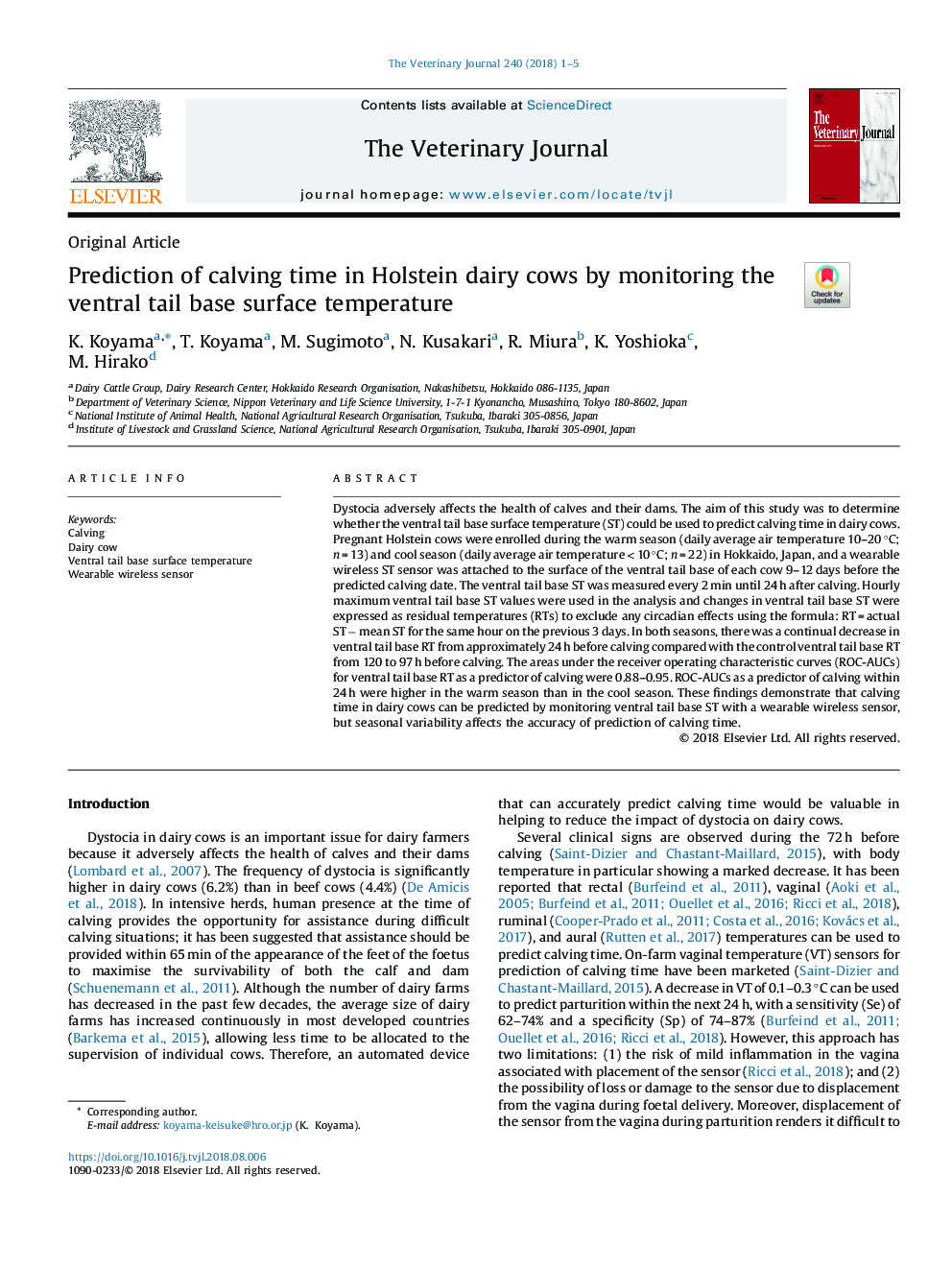| Article ID | Journal | Published Year | Pages | File Type |
|---|---|---|---|---|
| 10143216 | The Veterinary Journal | 2018 | 5 Pages |
Abstract
Dystocia adversely affects the health of calves and their dams. The aim of this study was to determine whether the ventral tail base surface temperature (ST) could be used to predict calving time in dairy cows. Pregnant Holstein cows were enrolled during the warm season (daily average air temperature 10-20 °C; n = 13) and cool season (daily average air temperature < 10 °C; n = 22) in Hokkaido, Japan, and a wearable wireless ST sensor was attached to the surface of the ventral tail base of each cow 9-12 days before the predicted calving date. The ventral tail base ST was measured every 2 min until 24 h after calving. Hourly maximum ventral tail base ST values were used in the analysis and changes in ventral tail base ST were expressed as residual temperatures (RTs) to exclude any circadian effects using the formula: RT = actual ST â mean ST for the same hour on the previous 3 days. In both seasons, there was a continual decrease in ventral tail base RT from approximately 24 h before calving compared with the control ventral tail base RT from 120 to 97 h before calving. The areas under the receiver operating characteristic curves (ROC-AUCs) for ventral tail base RT as a predictor of calving were 0.88-0.95. ROC-AUCs as a predictor of calving within 24 h were higher in the warm season than in the cool season. These findings demonstrate that calving time in dairy cows can be predicted by monitoring ventral tail base ST with a wearable wireless sensor, but seasonal variability affects the accuracy of prediction of calving time.
Related Topics
Life Sciences
Agricultural and Biological Sciences
Animal Science and Zoology
Authors
K. Koyama, T. Koyama, M. Sugimoto, N. Kusakari, R. Miura, K. Yoshioka, M. Hirako,
